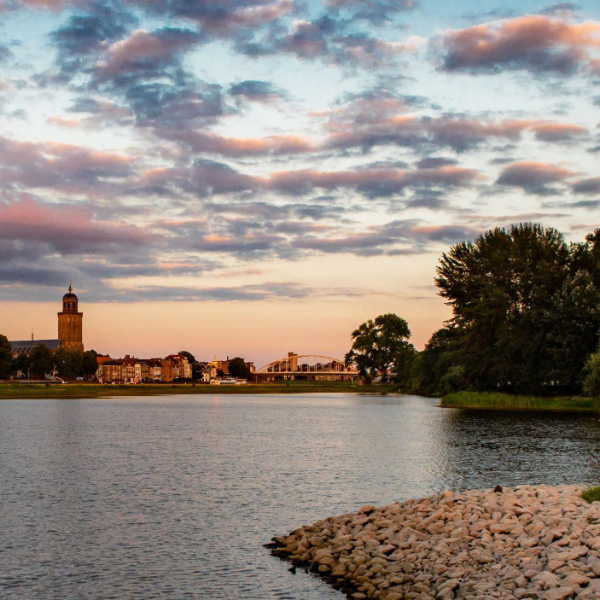Developing sustainable design principles

Developing sustainable design principles
The Dutch engineering sector began developing instruments to measure and incorporate sustainability in design and implementation around ten years ago. Sustainability was a catch-all term for many and there was a significant need for a clearer definition. This resulted in many attempts to reinvent the sustainability wheel, with tools for making integrated considerations within construction projects and designs. The topics initially came from the physical domain, including water, soil, air and nature, and only a few from the social domain.
Search for the right approach
Witteveen+Bos started working with several European partners in the Sustainable Cities programme to give substance to sustainability and develop a framework for sustainable urban development. The partners soon noticed that there was a significant need for simplification - a tool must also be feasible in practice, without turning into a research project - and that the number of topics was almost endless. Add to this the natural tendency of engineers to measure all potential effects with precision and the risk of failure becomes significant. Witteveen+Bos gradually decided to translate its potential contribution to resolving substantial global challenges not in topics, but in principles: the sustainable design principles. These are various mechanisms/methods to make designs more sustainable. Designing is after all the ‘core business’ of an engineering firm.
The principles each contribute in their own way to the sustainable development goals as formulated in 1992 during the UN Earth Summit: the predecessors of the UN’s Millennium Development Goals and the recent 17 Sustainable Development Goals (SDGs). The link between sustainable design principles and the global goals is, therefore, the aim for sustainable development.
The sustainable design principles challenge us to produce designs that have the highest potential positive impact on people’s well-being. This sounds easy, but the trick for engineers is to design in such a way that no unintended negative effects occur alongside the effects of positive well-being. This is a constant danger as, to keep the design process manageable, the design task is often simplified to a single objective. We therefore need to stay vigilant for all effects as the problem with unintended side effects is that we often do not see them coming.
Designing is looking ahead and making choices
Designing is making choices with a forward-looking approach. During the design process, we devise measures to resolve a problem or grasp an opportunity to improve well-being. This is a creative, yet structured process that comprises:
- a problem analysis: what is the problem, what is standing in the way of our well-being and which well-being objectives do we wish to achieve with the project?
- a system analysis: what created the problem and which buttons can we press to remove the cause of the problem?
- a function analysis: which functions does the design need to fulfil to resolve the problem?
- a variant study: in what different ways can the functions be fulfilled, which physical objects are needed for this and what are the dimensions of those objects?
- an effect study: what are the positive well-being effects of all variants, do the variants also have unintended negative well-being effects and what do the variants cost?
During the design process we make decisions based on the expected well-being effects. And for finding measures that have favourable effects we have our seven sustainable design principles. Each principle has its own perspective and each principle adds something to the other six principles. The relevancy of the principles depends on the design challenge.
No quality without sustainability
The sustainable design principles are part of the Witteveen+Bos quality system. This means that each project manager must indicate in his or her project plan which principles are used or not and the result of this. This ‘comply-or-explain’ principle has resulted in the sustainable design principles being known by most Witteveen+Bos employees. The latest survey showed that 80% of employees is aware of the principles and 40% used these in 2017. In practice, this initially means an additional thought process as we need to assess for all the principles whether they can be used in the project we are implementing. Eventually, this thought process will become a standard process or will become second nature. This way we continuously compel ourselves - together with clients, partners and other stakeholders - to go for the best, armed with the sustainable design principles as our guide for doing the right thing.